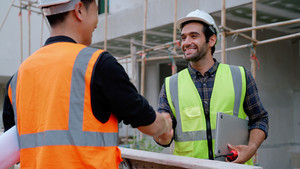Why Clear Communication with Your Home Builder Is the Key to a Successful Project
Freeland, United States - August 6, 2025 / Pistro Builders LLC /
- Hiring home builders with good communication helps prevent delays, misunderstandings, and costly construction errors.
- Clear communication means regular updates, active listening, documented decisions, and transparency at every stage of the project.
- Many construction mistakes stem from vague or missing communication; written confirmations and visual references reduce this risk.
- Setting expectations early, including contact methods and update frequency, ensures smoother collaboration throughout the build.
- Good communicative builders use tools like project management apps, shared folders, and photo updates to keep homeowners informed.
- Homeowners should stay involved, ask questions, and maintain organized records to avoid miscommunication.
- Trust and respect are built through consistent, honest dialogue, not just technical expertise.
Building a home or undertaking a significant renovation is one of the biggest financial and emotional investments many people will ever make. It’s a journey filled with excitement, decisions, and — when things go wrong — stress. While design, materials, and craftsmanship all play a role in the success of a home project, one factor often determines how smoothly the experience goes: communication.
Clear, consistent, and respectful communication between the homeowner and the builder is essential. Whether you're building from the ground up or remodeling a kitchen, working with home builders with good communication will make the difference between a frustrating ordeal and a rewarding collaboration. In this article, we’ll explore how builders who communicate well help clients avoid costly mistakes, set clear expectations, and deliver high-quality results.
Why Communication Is Critical in Residential Construction
Poor communication is one of the most common root causes of project delays, budget overruns, and mismatched expectations. Home construction involves many moving parts — from architectural plans and permit approvals to contractor schedules and material deliveries. Any breakdown in communication at one point can trigger a domino effect that impacts the whole project.
Builders with strong communication skills are more likely to:
- Understand the client’s vision clearly and translate it accurately into the build.
- Proactively address concerns or potential issues before they escalate.
- Keep homeowners informed of progress, changes, and setbacks.
- Provide accurate cost estimates and flag any budget deviations early.
- Create a collaborative, transparent relationship where both parties feel heard.
On the other hand, working with a builder who doesn’t communicate well can lead to misinterpretations, duplicated work, and frustration — even if the construction quality is technically sound.
What Good Communication Looks Like in a Builder-Client Relationship
Many homeowners assume that hiring a skilled contractor is enough, but technical ability doesn’t always come with interpersonal or organizational strengths. So, what does it really mean to hire home builders with good communication?
Here are the qualities and habits to look for:
- They listen actively. A builder who listens attentively and repeats back your requests to confirm understanding is likely to respect your vision.
- They set expectations early. From timelines and budgets to subcontractor schedules, good communicative builders outline key details up front.
- They provide regular updates. You should never be left wondering about progress. Builders who communicate well often send weekly summaries or use project tracking tools.
- They encourage questions. A trustworthy contractor will welcome questions and take the time to explain your options.
- They document decisions. Agreements, changes, and approvals should be captured in writing, ideally with visual references or samples.
- They inform you before problems arise. Delays, budget concerns, or site conditions are shared early, not hidden until the last minute.
The Role of Communication in Avoiding Costly Building Mistakes
A simple misunderstanding can cost thousands in rework or upgrades. Many common and expensive construction mistakes stem from communication lapses between homeowners and builders.
Common Communication-Related Mistakes
- Incorrect finishes or materials: If you said "brushed nickel" and got "chrome," chances are it wasn’t documented clearly.
- Unapproved changes in design: Builders may assume approval of minor changes that were never explicitly greenlit by the client.
- Foundation or framing errors: Misreading blueprints or unclear scope instructions can lead to structural issues that require costly fixes.
- Missed inspections or delays: Builders who fail to communicate with clients and inspectors can trigger hold-ups that throw off the entire project schedule.
How Builders with Strong Communication Prevent These Issues
- Confirmation protocols: Effective communicators will confirm selections, layout details, and material types in writing or through client portals.
- Visual documentation: Photo updates or site visits ensure that the homeowner can catch and correct discrepancies in real-time.
- Transparent budgeting: Builders who communicate clearly provide a breakdown of costs with real-time tracking of overages or adjustments.
- Defined change-order process: Any deviations from the original plan are discussed, approved, and signed off before proceeding.
By working with builders who communicate well, you reduce the risk of unpleasant surprises, costly delays, and misaligned expectations.
How to Set Communication Expectations with Your Home Builder from Day One
Even if you’re working with home builders, it’s critical to establish a clear communication framework from the beginning. This ensures both parties are aligned on how and when information is shared.
Step-by-Step Guide to Setting Communication Expectations
Identify the main point of contact.
Is it the builder, a site manager, or a project coordinator?
Make sure this person is reachable and accountable.
Define communication channels.
Agree on preferred methods: phone, email, project apps, or text messages.
Email is ideal for formal updates; texts may work for quick clarifications.
Establish update frequency.
Weekly check-ins, milestone reports, or scheduled site walkthroughs keep everyone on the same page.
Create a shared folder or dashboard.
Tools like shared drives, spreadsheets, or project management platforms can track documents, designs, and changes in one place.
Document everything.
Even verbal agreements should be followed up with a written summary via email.
Use checklists to track decision approvals, order confirmations, and sign-offs.
Discuss how problems will be handled.
Agree on a process for raising and resolving concerns.
Ensure both sides feel comfortable having honest discussions.
Confirm project scope in writing.
Outline what is included (and excluded) in the build — this prevents “scope creep” and hidden costs.
Traits to Look for When Choosing a Communicative Home Builder
Some contractors are excellent tradespeople but fall short in client relations. When interviewing or researching potential builders, prioritize communication skills just as much as construction experience.
Questions to Ask Potential Builders:
- “Can you walk me through how you typically keep clients updated during a project?”
- “Do you provide written estimates and change-order documentation?”
- “How do you handle conflicts or misunderstandings during a build?”
- “What systems or tools do you use to manage client communication?”
- “May I speak with a recent client about their experience communicating with your team?”
Red Flags:
Avoid builders who:
- Are vague or dismissive about timelines or budget.
- Give verbal assurances without written follow-up.
- Don’t respond to emails or calls promptly.
- Rush through meetings without explaining details.
- Discourage you from asking questions or making input.
How Technology Supports Builder-Client Communication
Many modern home builders with good communication skills use technology to enhance transparency and streamline project management.
Common Tools Used by Communicative Builders:
- Project Management Apps: These platforms help organize schedules, photos, invoices, and client messages in one hub.
- Cloud-Based Storage: Shared folders allow homeowners to access documents and plans 24/7.
- Digital Blueprints or 3D Models: Help clients visualize changes before construction begins.
- Progress Photos or Video Walkthroughs: Great for clients who can't visit the site regularly.
- Automated Alerts: Notifications for deliveries, milestones, or required approvals.
Homeowners should feel empowered to request or suggest using such tools to stay informed and involved.
Setting Realistic Expectations and Maintaining Mutual Respect
Even with excellent communication, building a home is a complex process that comes with inevitable changes and occasional disruptions. It’s important to set boundaries and maintain a cooperative mindset.
Best Practices for Homeowners:
- Don’t expect instant replies outside of working hours. Respect the builder’s schedule unless it's urgent.
- Stay engaged but don’t micromanage. Trust the builder to manage subcontractors and daily operations.
- Be honest and upfront. If something doesn’t feel right, say so — respectfully and early.
- Keep records of all interactions. Create a digital log of decisions, approvals, and follow-ups.
The goal is not perfection — it’s progress and partnership. Effective communication requires effort from both parties.
Final Checklist: Building a Strong Communication Framework
Here’s a quick-reference checklist for homeowners looking to establish solid communication with their builders:
Before Hiring a Builder:
- Ask about their communication style, tools, and past client experiences.
- Read reviews that mention responsiveness and professionalism.
- Confirm who will be your primary contact.
Before Construction Begins:
- Agree on a communication schedule.
- Set up shared folders or tools.
- Document every choice, approval, and change.
- Define how changes or issues will be handled.
During the Build:
- Stay involved with regular updates or site visits.
- Ask questions and clarify anything unclear.
- Review photos and progress reports.
- Keep copies of emails and texts.
If Problems Arise:
- Raise concerns early — don’t wait.
- Revisit the original agreement to resolve misunderstandings.
- Keep the tone collaborative, not confrontational.If needed, request a formal meeting to reset expectations.
Conclusion: Trust Is Built Through Communication
Choosing home builders with good communication isn’t just about avoiding headaches — it’s about protecting your investment, your time, and your vision. A successful construction project depends on more than just tools and materials; it depends on trust, clarity, and collaboration.
By prioritizing communication from day one, setting clear expectations, and choosing a builder who values transparency, you create a smoother path toward your dream home. Remember, the best builders don’t just build walls and roofs — they build confidence through conversation.

Contact Information:
Pistro Builders LLC
5932 Midland Rd #5
Freeland, MI 48623
United States
Charles Pistro
https://www.homesbypistro.com/


